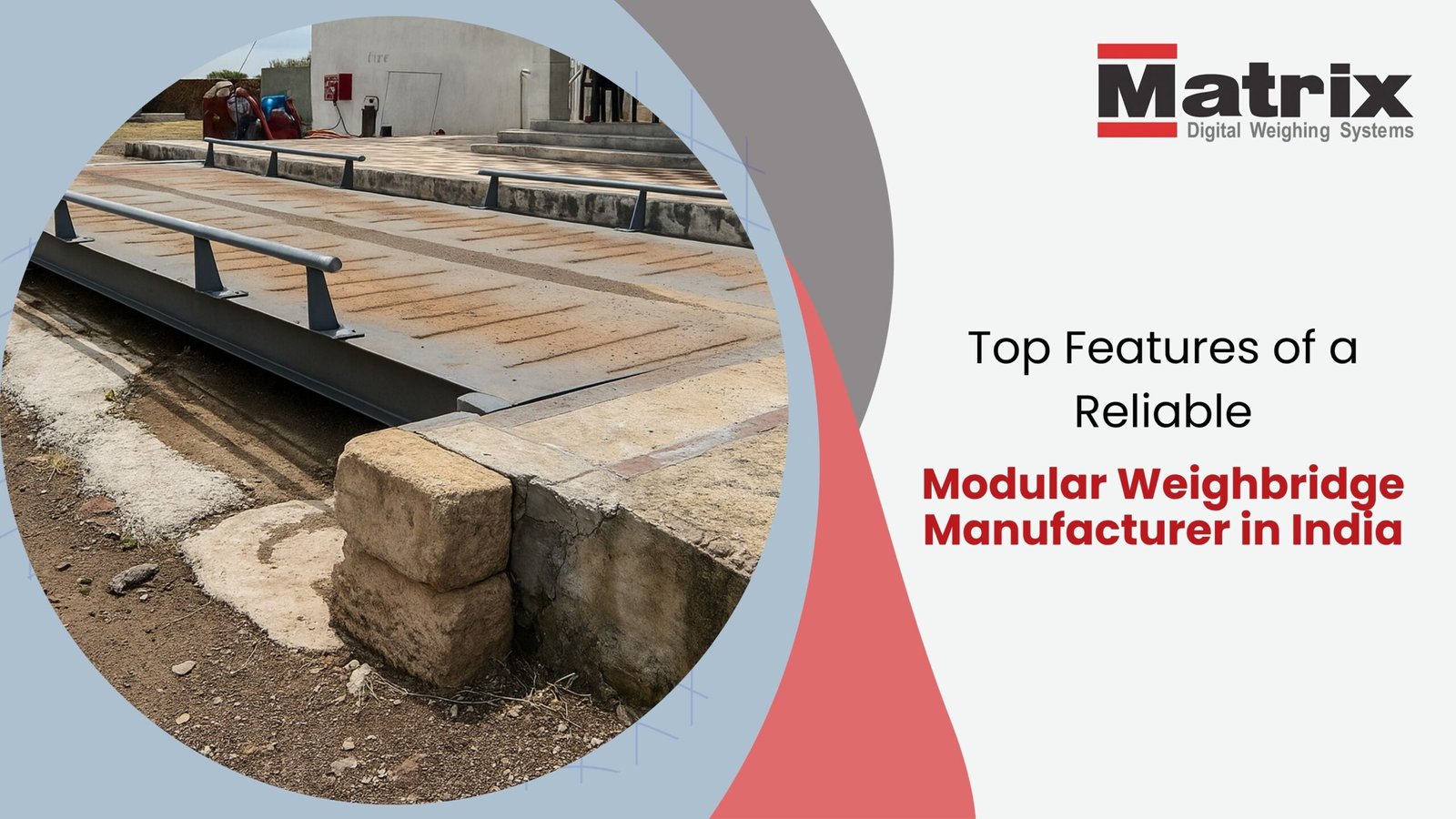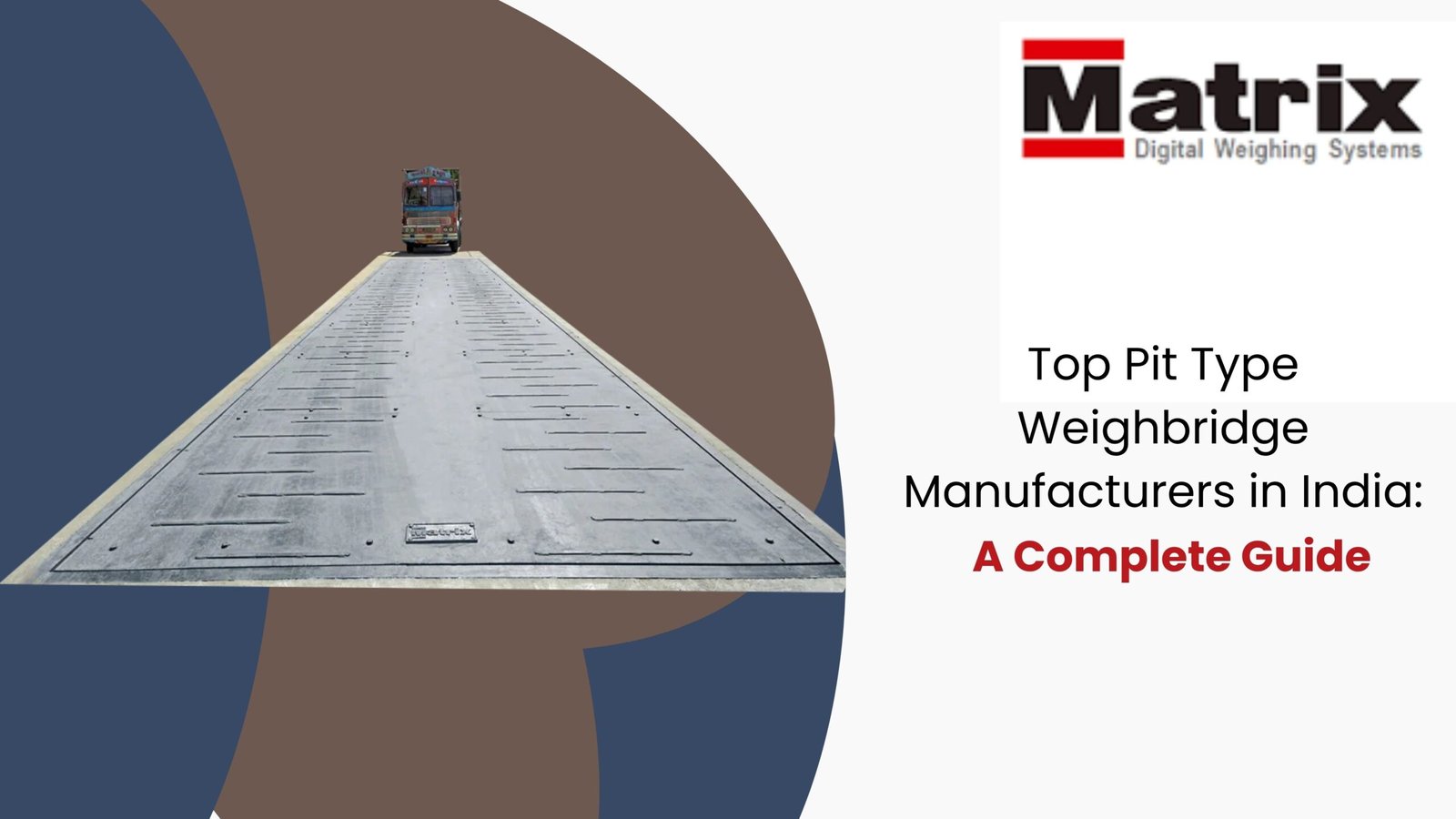Top Features of a Reliable Modular Weighbridge Manufacturer in India

Introduction
Buying a weighbridge is not a “hardware only” decision. It is a civil, uptime, and audit decision that will live with your yard for years. Indian sites face the same pattern every monsoon: soft shoulders, water splash on approaches, and trucks queueing in peak hours. If the system drags on civil work or fails in rain, your books feel it. A modular weighbridge solves the practical bits—faster installs, cleaner service access, and painless relocation—but only if the manufacturer does the engineering and service right.
This guide explains what “modular” really means, then shows the exact features that separate reliable makers from brochure talk. You’ll get a spec checklist, a site-and-civil lens, a pricing view beyond ex-works, a stepwise implementation plan, and tight FAQs. Use it to shortlist, compare, and commission with confidence.
What is a modular weighbridge?
A modular weighbridge uses factory-built deck sections that bolt together on a surface foundation. The low-profile modules reduce ramp length, speed up assembly, and allow future changes in platform length.
- Above-ground layout: typically pitless with approach ramps.
- Flexible sizing: add/remove modules to match vehicle mix.
- Fast commissioning: most work shifts off-site into controlled fabrication.
Core features to look for
Proven modular engineering
- Stiff, quiet decks: welded I-beam or box-section ribs resist flex, rattle, and twist under braking.
- Factory pre-assembly: bolt patterns, mounts, and wiring checked before dispatch; fewer surprises on site.
- Anti-lift restraints: hardware that resists wind uplift and sudden axle shocks.
Fast, low-civil installation
- Shallow foundations: raft or short-depth blocks that suit mixed Indian soils.
- Ramp guidance: clear drawings for gradient, texture, and curb/wheel guides.
- Tidy conduit plan: protected cable runs from cells to junction box to terminal.
Durability in Indian conditions
- Anti-skid plates: safe traction during rain and grain spillage.
- Corrosion controls: blasted steel, primer + top coat, sealed edges; zinc hardware where it matters.
- IP-rated electronics: sealed junction boxes and armored cables that survive washdowns.
Accuracy and stability
- Right cell count/class: sized for axle groups and deck length; no corner goes “soft.”
- Foundation stiffness: deflection kept within spec so repeatability stays tight.
- Documented tests: corner, creep, and repeatability logs in your handover file.
Software and automation readiness
- Ticket discipline: locked templates, audit trails, and tare history.
- Hooks for growth: boom barriers, cameras, ANPR, and ERP/WMS without rewiring.
- Power hygiene: UPS on the terminal, surge/lightning protection on the line.
Compliance and calibration support
- Legal Metrology workflow: stamping, records, and re-verification reminders.
- SLA-based service: time-bound responses; preventive visits, not only breakdown calls.
Technical specifications checklist
Capture these fields from every quote so you compare like-for-like.
- Capacity & platform size: 30–100+ t; common sizes 9×3, 12×3, 16×3, 18×3 m—match to vehicle mix.
- Module height & deck build: low profile, checkered plate thickness, rib spacing.
- Load cells & mounts: 4–8 cells; protection class; anti-lift/rocker details; junction box spec.
- Least count & accuracy class: typical 5–20 kg graduations; confirm test method.
- Protection & earthing: SPD rating, busbar/rod spec, separate earth pits.
- Cabling & conduits: armored runs, sealed penetrations, labeled terminations.
- Assembly method: factory pre-fit, torque specs, lifting points, relocation guide.
- Data & prints: indicator make, print format, storage, and export options.
Site and civil requirements
Drainage and housekeeping
- Shed water fast: cross-fall on approaches; side channels that don’t clog in silt.
- Keep the deck clean: daily broom/blower routine; weekly wash for sticky loads.
- Protect the pitless base: avoid ponding at ramp toes; compact shoulders well.
Approaches and traffic
- Straight, level run-up: no tight turns before the deck; clear wheel guides.
- Queue discipline: line marking, bollards, and lighting for night shifts.
- Turning radius check: verify multi-axle trailers can align without reverse-and-correct.
Power and IT
- Stable feed: dedicated circuit, UPS for terminal, surge protection for indicator.
- Secure room: dry, dust-lite operator cabin with cable management and clear sightline.
Pricing and total cost factors
The lowest ex-works number is rarely the lowest five-year cost. Weigh the whole stack.
- Civil scope: foundation, ramps, drainage, and conduits can swing cost more than the deck.
- Steel and finish: thicker plates and dense ribbing cost more but pay back with quieter decks and fewer weld repairs.
- Electronics: higher-grade cells, sealed junction boxes, and proper SPDs reduce drift and downtime.
- Automation: barriers, cameras, ANPR, and licenses—budget now, avoid rework later.
- AMC & calibration: preventive visits, re-verification help, and guaranteed response windows.
- Downtime math: one rain-week lost to cable faults costs more than an upgraded IP rating.
Implementation steps
Step 1: Survey and sizing
Map truck types, axle loads, and peak-hour counts. Pick platform size from traffic flow, not habit.
Step 2: Freeze drawings
Lock foundation, ramp gradient, wheel guides, drainage, earthing, and conduit paths. Approve before concrete.
Step 3: Factory pre-assembly
Insist on pre-fit: modules, mounts, cabling, and indicator settings. Ship with torque charts and lift plans.
Step 4: On-site assembly
Set modules, fit cells, route cables inside conduits, and install SPD + UPS. Keep the cabin dry and tidy.
Step 5: Calibration and stamping
Run corner/creep tests, complete Legal Metrology stamping, and store records in a shared folder.
Step 6: Handover and SOPs
Train operators on alignment, zero checks, print discipline, and housekeeping. Schedule the first preventive visit.
FAQs
Q: Is modular always pitless?
A: Almost always. Surface-mounted modules with ramps enable faster installs and easier service. Hybrid layouts exist but are uncommon.
Q: Can I extend the platform later?
A: Yes. Reliable modular systems allow length changes by adding or removing sections, provided the foundation and cell plan support the new size.
Q: How fast can we commission?
A: If the foundation is ready, on-site assembly often takes days, not weeks. Pre-assembly at the factory is the real time-saver.
Q: What protects accuracy over time?
A: Stiff foundations, correctly sized load cells, clean earthing, and disciplined calibration. Most drift stories trace back to shortcuts on these four.
Q: Will monsoon impact operations?
A: Not if drainage, sealing, and housekeeping are taken seriously. In India, a 10-minute daily clean beats a 10-day seasonal outage.
Conclusion
A modular weighbridge should feel boring in the best way—no rattle, no surprises, no downtime drama. Choose a manufacturer that welds for stiffness, installs with clean drawings, protects electronics with proper earthing and SPDs, and stands behind calibration with SLAs. Use the checklists above to compare quotes point-by-point. Next step: fix your platform size, request stamped drawings, and insist on factory pre-assembly with a dated commissioning plan.
Matrix Weighbridge
We design, build, and support modular weighbridges that start fast, weigh right, and stay online through India’s toughest seasons. Our promise: clear drawings, clean installs, and fast service when it counts. Book a site assessment today to get a tailored foundation plan, a firm timeline, and a transparent quote.

